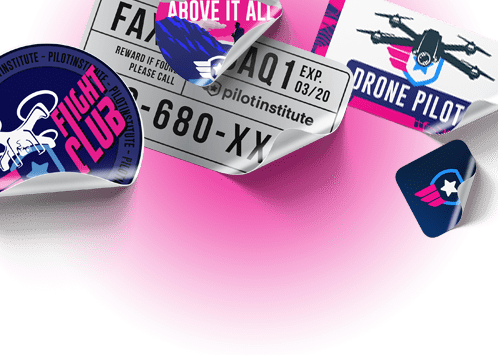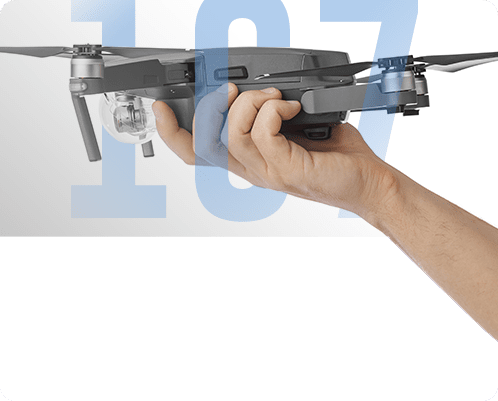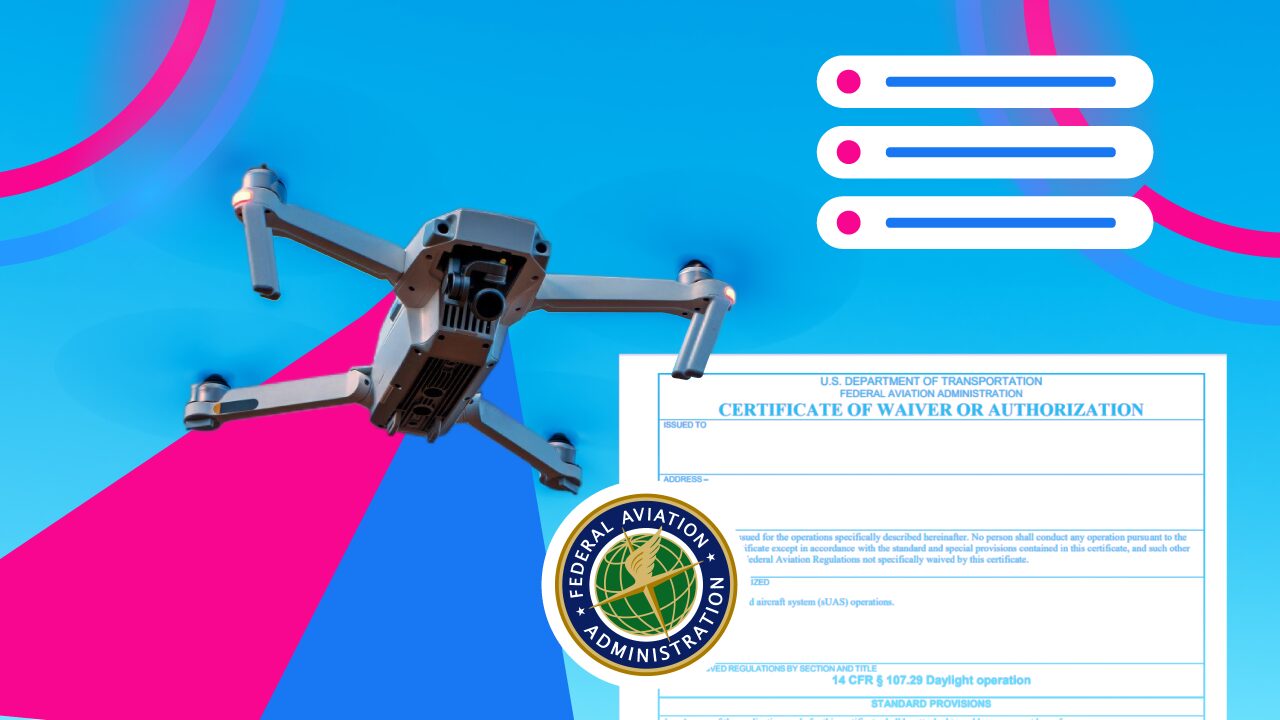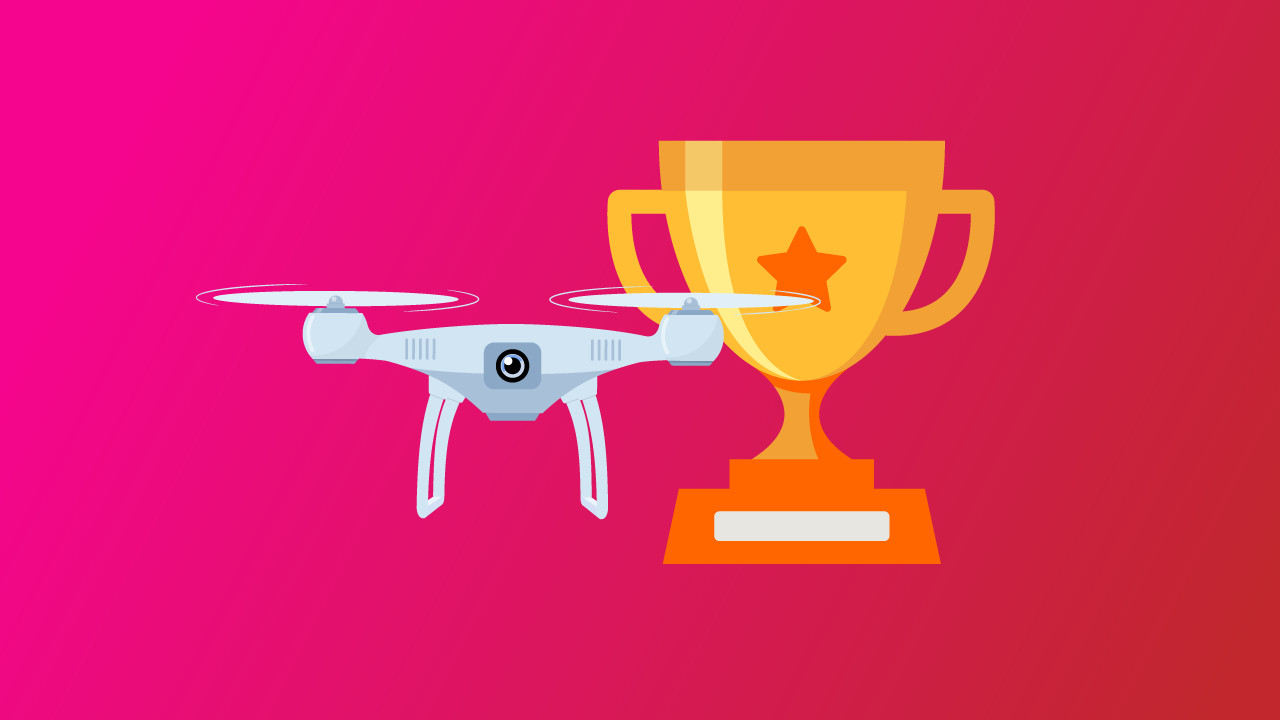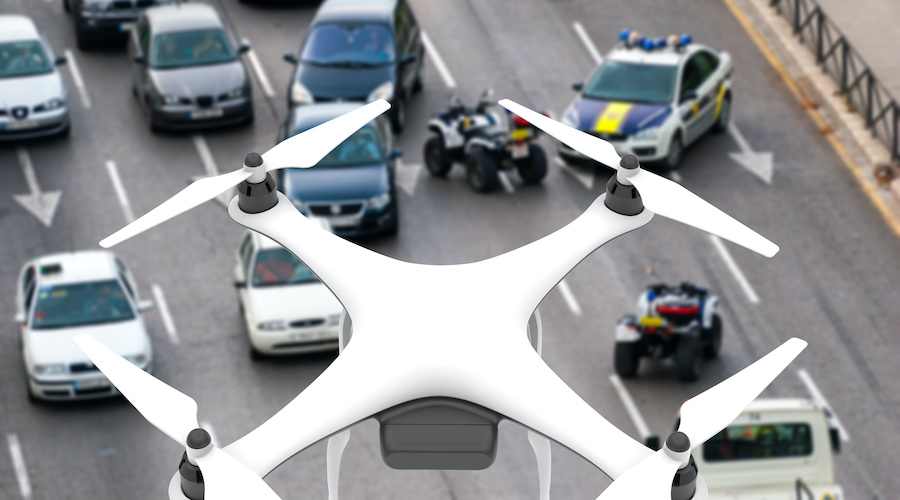-
Use cases for drones in real estate
- Aerial photos
- Virtual tours
- 3D models
-
Why use drones for real estate?
- Cheap
- Easy to deploy
- Captures the scale of a property
- Streamlined workflow
-
Essential features for a real estate drone
- 4K camera
- Stabilization
- HDR/AEB or shooting in RAW
- Portability
- Battery life
-
Complying with legal regulations
- Register the drone
- Get Part 107 pilot certification
- Check for controlled airspace
- Drone Law Wiki
- Local laws
-
How much you will need to spend
- Drone
- Accessories
- Insurance
- Software
- Training
-
What is the ROI for using drones in real estate?
- A real estate agent who does the drone operations themself
- A real estate agent who hires a professional drone pilot
- A professional drone pilot who offers the service for real estate
-
Final thoughts
The unique capabilities of drones have made them indispensable in several commercial industries. One such industry is real estate. As a tool for photography, using drones has proven to help increase the conversion rates of real estate listings.
This practice involves integrating two separate and unrelated fields – drone flight and real estate. If you belong to either of the two and would like to dip your toes into real estate drone operations, check out our guide on everything you need to know about this thriving industry,
Use cases for drones in real estate
There are many ways to go about using drones for real estate. If you’re a real estate agent, you can either hire a professional to do drone work for you or buy a drone yourself and learn how to fly it. If you are already an experienced drone pilot, you can also start offering your services to real estate firms and agents. Even experienced photographers can get into this field if they can learn how to fly a drone since their photography skills can already give them a leg up.
How exactly can drones be used for real estate listings? There are several options:
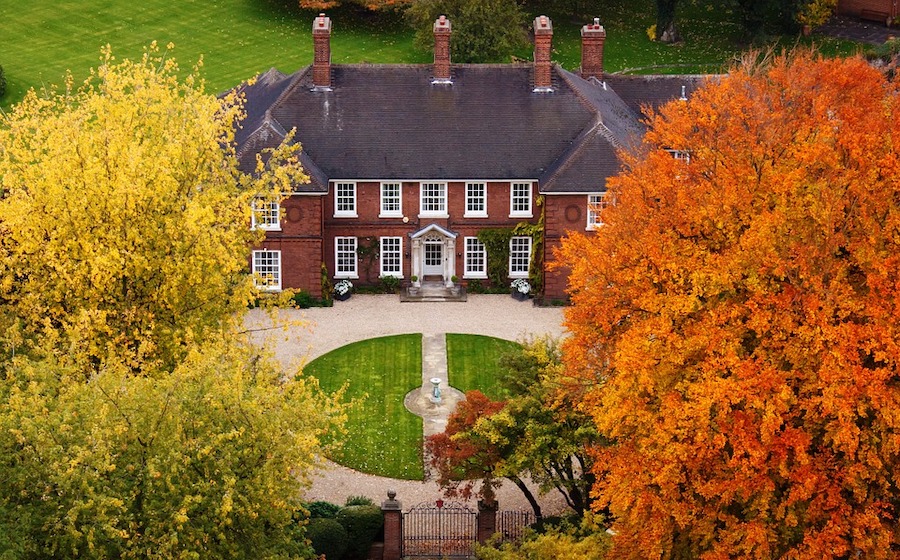
Aerial photos
The most common use case for drones is to simply take aerial photos to enhance a real estate listing. Despite being a fairly simple concept, drones already provide lots of advantages by using them this way. Though there are other means to take aerial photos, using drones is the easiest and most practical.
Virtual tours
Aside from photos, drones can also record high-definition videos. This can be done while the drone is flying, allowing you to create videos that show a virtual tour of the property under the listing. If the drone pilot is skilled enough, this can even be done in the interior space of a house. The immersion of a virtual tour is something that cannot be captured by photos alone.
3D models
It’s quite unconventional, but it is now possible to advertise a property by providing potential clients with accurate 3D models of the property. The advantage of a model is that clients can rotate and play around it, adding an element of interactivity to the sales process. Drones are especially suited for 3D modeling considering how easily they can fly around or inside a property.
Ultimately, the objective of using drones in real estate is to create more effective marketing materials. According to a study done by the Wall Street Journal, up to 83% of property owners prefer to list with agents that can produce aerial photos and videos. With that big of an advantage, it is arguably necessary to integrate drone-based materials in real estate listings for agents to stay relevant in today’s market.
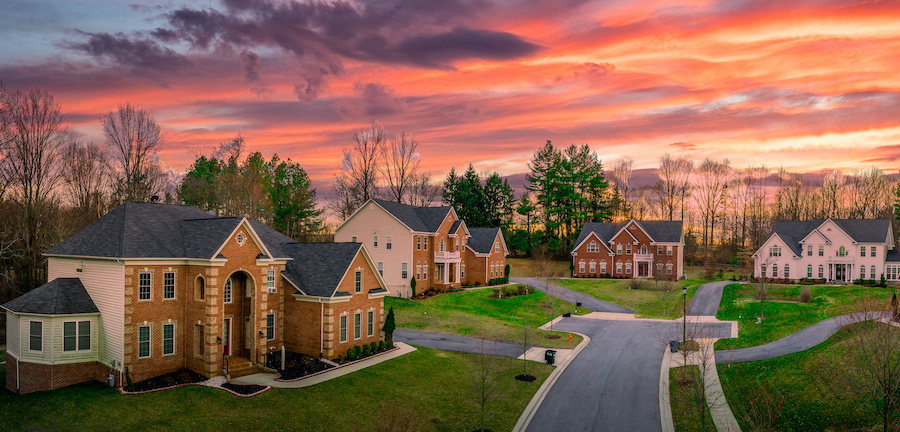
Why use drones for real estate?
Given all the potential use cases for drones, why are they uniquely equipped to create these marketing materials? After all, aerial photos and 3D models have been created even before drones became a popular thing. What are the unique benefits that make drones a worthwhile investment?
Cheap
Before drones were common, aerial photos and videos had to be captured using a manned aircraft, typically a helicopter. This is easily more expensive – renting a helicopter for a few hours would already be more expensive than buying a mid-range commercial drone. With such a low price point, drones offer a much more practical means for capturing aerial photos and videos.
Easy to deploy
Some drones, particularly the ultra-portable models, were designed specifically to be easy to travel with. This is great for those who are going on vacation, but also for real estate agents who need to drive out into the properties that they wish to have listed.
As long as you have the proper certifications and authorizations, a drone can be up in the air within minutes of arriving in a location. The preparations needed to fly a drone are minimal compared to flying any type of manned aircraft. Again, this simplicity helps keep costs down and emphasizes how effective drones are as tools.
Captures the scale of a property
Scale is hard to capture using ground-based photos, especially for very large houses or buildings. Even if you can capture the house using multiple angles, the human brain isn’t predisposed to being able to imagine how these different shots go together.
Using a drone provides an opportunity to capture a house or building in its entirety with just a single shot. Moreover, zooming out a shot places the property in the context of other nearby houses, roads, or natural features. This offers the opportunity to show features that are hard to convey in photos such as the size of the yard and the condition of the roof.
Streamlined workflow
Drones are, among other characteristics, smart devices. They have been designed with a digital workflow in mind. If you’re taking photos with a drone, you can review them right away on a mobile device or remote controller to check if the photos are turning out okay. Drones can also provide a real-time video feed that can help in checking the quality of a virtual tour video as it is being shot.
Drone systems can be set up to automatically upload photos and videos to a cloud server. After shooting the media, a drone pilot or real estate agent can just access them via a laptop and continue working with them in post-processing. This workflow based on a digital platform helps streamline the entire process of putting up photos and videos for a real estate listing.
With some practice, taking photos with a drone doesn’t get much harder than having to do it with a DSLR camera. This is a low-risk, low-cost, and high-yield venture for real estate agents.
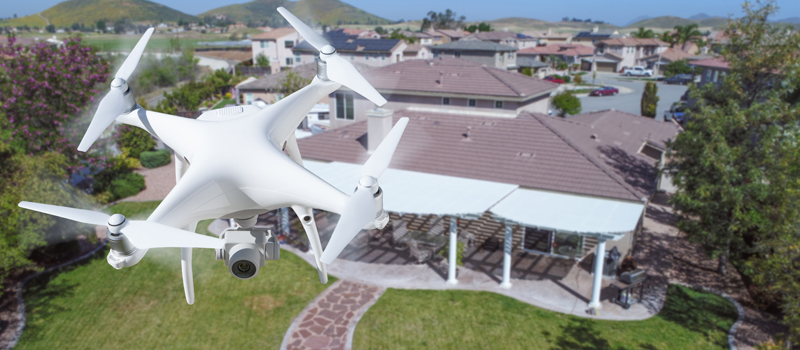
Essential features for a real estate drone
As expected, the most important hardware for this task is the drone. You can choose to buy one yourself or ask a professional drone pilot for their service. In any case, it is important to know the features that are essential for capturing high-quality photos and videos for a property listing.
4K camera
Nowadays, a respectable camera drone should be able to capture images at a minimum of 4K resolution. This is very important for aerial shots, as you are almost certain that some clients will be zooming in on those photos to see smaller details. Shooting at 4K will make those details much more discernible.
The good news is that even mid-range drones designed for hobbyists already come with 4K-capable cameras. The newest drones today have ramped this up to 8K resolution. These are still very expensive and not quite as practical.
Stabilization
Drones can move a lot even when they try to maintain a hover. If you want your photos and videos to look crisp, then look into the drones that have the very best stabilization technology.
There are two aspects to stability – flight stability and camera stability. Flight stability refers to the ability of a drone to maintain its position using a combination of GPS positioning and other sensors. On the part of the camera, stability can be achieved through the use of a three-axis mechanical gimbal.
We advise against the use of electronic image stabilization (EIS) in the absence of a mechanical gimbal. The performance of EIS simply is not good enough for professional use.
HDR/AEB or shooting in RAW
Photographers should be familiar with these terms – HDR stands for High Dynamic Range and AEB stands for Auto Exposure Bracketing. Both these features are designed to maximize the clarity of details in your shots even when lighting conditions are less than ideal. Considering how unpredictable lighting can be when doing outdoor shoots, an HDR or AEB feature is a great way to avoid over-exposed or under-exposed shots.
Better yet, you can get a camera drone that can shoot photos in RAW format. A RAW image file contains data that has not been processed by an image sensor. By capturing a wider dynamic range, a RAW image offers more versatility in post-processing. For seasoned photographers, shooting in RAW format gives them better control over what the finished images will look like.
Portability
If you plan to travel around frequently to shoot images of property listings, then you will certainly appreciate having a lightweight and portable drone. Many of the modern drones are considered ultra-portable and can fit in a small backpack, even with all their accessories.
A lot of these drones are perfectly capable of taking professional-quality photos and videos, despite their small sizes. There are ultra-portable drones out there that can shoot in 4K, have built-in HDR features, and can maintain a very stable hover.
Another benefit of using a small drone is that it’s perfectly suited for indoor flight. Just by the account of being smaller, ultra-portable drones are less likely to get into crashes in indoor spaces. Again, this is a task that should only be done by an experienced drone pilot.
Battery life
Don’t be surprised if it takes you an hour or more to get shots that you’re satisfied with. Most drones can’t fly that long, so a change in batteries will have to be in order. This takes up quite some time, as you will have to fly the drone back home to do the battery swap.
To reduce the time it takes to do an aerial shoot, go for a drone with a battery that can last at least 30 minutes. This is fairly common now with newer models, even in the ultra-portable drone market. It’s still prudent to pack a few batteries whenever you have a planned shoot.
Complying with legal regulations
Using drones for real estate advertising falls under the category of professional drone work. This means that it has to comply with a set of rules implemented by the FAA, specifically 14 CFR Part 107. Before shooting any photos for real estate, here are some things that need to be done:
Register the drone
Under the FAA’s rules, all drones that will be used for professional or commercial work need to be registered through the FAADroneZone website. This applies regardless of the weight of the drone.
Thankfully, drone registration is a quick and inexpensive process. Also worth mentioning is that drones for commercial work need to be registered individually even if they are owned and operated by a single person.
Get Part 107 pilot certification
Likely the most time-consuming step of preparing for commercial drone work is earning a remote pilot certificate under Part 107. We have written multiple guides on this process. It basically involves taking a knowledge test on various aviation-related topics and going through a TSA background check.
Part 107 certification is a measure taken by the FAA to ensure that all professional drone pilots in the USA pass a specific standard when it comes to proficiency and knowledge. The test covers topics that are essential for drone pilots to be integrated into the system of national airspace.
If you’re aiming for Part 107 certification, the good news is that it will allow you to partake in any type of commercial drone work. Should you wish to branch out from real estate photography, you will not need to apply for any other certification standard.
It goes without saying that being certified under Part 107 involves complying with the Part 107 rules. The basic rules involve flying to a maximum altitude of 400 feet above ground level, avoiding flying over crowds, and flying only within the range of visual line of sight. The landscape of drone-related legislation has been constantly changing for the last couple of years, so you will need to keep yourself updated.
Check for controlled airspace
Once you have been certified under Part 107, one of your primary responsibilities will be complying with airspace regulations. One of the most important rules of airspace is knowing what type of airspace you’re flying in.
If you’re doing a real estate shoot, then it’s worth the time to check the UAS Facility Map to determine the airspace type for the shoot location. If the property happens to fall within controlled airspace, you will have to request airspace authorization. This can be done easily through the LAANC system that is accessible via several apps for mobile devices.
Local laws
It would be unwise to go all the way to comply with federal laws only to overlook how local laws may affect the service you are offering. Many states or cities have come up with their own laws regulating drone-related activities. A lot of these laws have to do with privacy. You can potentially run into trouble if the house you’re documenting has neighbors who file a privacy-related complaint.
To avoid such trouble, it could be a good idea to consult the local law enforcement about their laws on drones. Doing your own research also does not hurt. You can still get harassed even if you are not doing anything illegal, so it’s best to cover all your bases.
How much you will need to spend
As expected, going into drones can be a bit of an expense. This is assuming that you plan to buy a drone and use it yourself.
Drone
If you’re a beginner, then we do not recommend getting a high-end drone. Instead, we suggest getting a mid-range drone that is designed to have a low learning curve. This lowers the risk of going into the venture – as good an idea it is to shoot aerial photos for real estate advertising, there is still a chance it does not pan out.
The Mavic Air 2 is an excellent entry-level drone for this purpose. It is an ultra-portable drone that comes with a 4K camera, a mechanical gimbal, HDR/AEB, and the ability to shoot in RAW format. It also costs only about $800 for the base model.
Accessories
A drone is not a standalone device, especially if you plan to use it for professional work. You will need to buy accessories that can help improve the photos and videos you take, as well as for general quality of life improvement. There is a wide range of possibilities here, but we can narrow it down to a shortlist. The products we are linking to here are for the Mavic Air 2 – you can find a similar set for just about any other drone model.
- Carrying bag
- Extra batteries
- Extra propellers
- ND filters
- Sun hood
- Propeller guards
- Anti-collision lights
- SD cards
The necessity for these accessories mostly depends on the circumstance. For instance, taking photos on a very bright and sunny day will be more comfortable with a sun hood. Having a set of ND filters can also help you avoid overexposed shots despite the harsh lighting. If you’re planning to fly indoors, then it would be a good idea to pack some propeller guards. Being prepared is a key element of offering a professional service.
The prices of these accessories will vary heavily depending on which brands you choose to buy them from. Be ready to spend at least $400 for a comprehensive set of accessories for your drone.
Insurance
Although not required by law, getting insurance for professional drone work is considered good practice. Clients are also generally more comfortable working with a service provider who has insurance. There are two types of insurance policies relevant for this activity – drone hull insurance and liability insurance.
Drone hull insurance is used to insure your drone, possibly including any high-end equipment you use. The coverage of drone hull insurance will depend on the cost of your drone system.
Liability insurance will cover all the expenses should a drone-related accident cause property damage or personal injury. The coverage of liability insurance is typically much larger than drone hull insurance.
It’s tough to estimate how much the recurring costs of insurance will be for you. As with any insurance policy, this will take into account your risk profile as well as the equipment you are using. Based on a rough estimate, we advise getting ready to pay at least $1200 per year on insurance premiums. However, premiums of more than $2000 per year are not unheard of in professional drone pilot circles.
A more practical option is to get an insurance policy that is “episodic”. These are insurance policies that are only active for the period that your drone operations are active. This on-demand model has become very popular in drone communities because of how inexpensive they are compared to traditional insurance products.
Skywatch and Verifly are two brands that have become prominent in this market. In this model, your insurance costs will scale up depending on the level of activity of your professional service. Rates will still vary from one person to another, but it’s possible to lower annual premium costs to $1000 for both drone hull and liability insurance.
Software
Since you’re offering professional drone photography services, you should be using post-processing software designed for professionals. Adobe Lightroom is one of the most popular choices, but you can also go for lesser-known alternatives like Darktable or DaVinci Resolve.
Should you go for software with a subscription-based pricing scheme, be ready to spend about $150 a year for a professional photo and video editing platform.
If you plan to offer 3D modeling as part of your service, you will also have to use photogrammetry software. These are typically more expensive but are offered at monthly rates, so you don’t have to commit to a subscription for a whole year. Should you need an entire year’s subscription, be ready to spend about $1000 per year.
Training
Training is very much a “your mileage may vary” matter. Some professional drone pilots advocate for formal training, while some have been able to get by just learning things on their own. Should you want some training, Pilot Institute offers the following courses that may interest you:
- Part 107 Made Easy for those who are yet to earn the Part 107 certificate
- Drone Flying 101 for those who are beginners to drone flight
- Drone Maneuvers Mastery for those who want to learn more advanced flight maneuvers
The great thing about Pilot Institute courses is that you only need to pay the course fee once and you will have access to the course materials forever, even when they are updated. They are also quite inexpensive – about $220 should give you all the lessons you need to get a good head start.
All in all, capital expenditure of about $1500 can be enough to start offering professional drone services for real estate documentation. Recurring expenses can get very expensive especially if your service becomes popular – about $2000 per year for both insurance premiums and software subscription.
What is the ROI for using drones in real estate?
Is there a viable business case for using drones in real estate? To more comprehensively answer that question, we need to look at it from three different perspectives. The business case and considerations will vary for each scenario.
A real estate agent who does the drone operations themself
Under this scenario, the real estate agent aims to improve the conversion of their listings by using drone photos and videos for marketing. Instead of hiring a professional, the agent undertakes the operations themselves – buying the drone, earning the certification, and learning how to operate the drone.
It has to be noted that this can take a lot of time. Just earning the Part 107 certification can take about 2 months, considering the time it can take to prepare for the knowledge test. It will also take some practice to build enough skill to capture high-quality aerial photos and videos.
We have already estimated the cost of this endeavor at about $1500 initial expense and $2000 recurring expenses. To build a business case, let us consider the following figures to estimate a real estate agent’s earning potential:
- In 2020, the typical real estate agent had 10 successful transactions (based on NAR 2021 highlights)
- The average cost of homes in the US is about $260,000 as of January 2021 (according to Zillow)
- Real estate agents earn a 3% commission for every successful transaction. This is assuming that another 3% goes to the brokerage firm for a total commission of 6%.
- Real estate agents can gain a 68% increase in the number of deals closed by using drones for marketing (according to a study by RIS Media). This number can seem optimistically high, so let’s settle for a conservative increase rate of 50%.
Based on these figures, successful transactions can be increased from 10 to 15 in a year by using drones. This will result in potential additional earnings of $39,000 in a year. Considering the costs of drone ownership we have estimated above, an agent can still enjoy a net increase of at least $35,000 per year.
Moreover, being able to close even just one additional deal can already offset the costs of starting up a drone-based venture.
A real estate agent who hires a professional drone pilot
Another potential scenario is for a real estate agent to hire a professional drone pilot to take photos and videos of property for listing. This is easier and less risky for the real estate agent but might not be as profitable.
We can assume that a real estate agent can hire a drone pilot at an average rate of $400 to take a bunch of photos and videos of a property. These prices can vary based on the skill level of the pilot and the size and location of the property being documented. Many drone pilots in this field can offer different packages based on the type of output that the client needs.
Conversion rates are notoriously low in the real estate industry, as is expected of a high-cost market. According to a 2021 study by Ruler Analytics, real estate has one of the lowest conversion rates of any industry at only 1.3%.
According to RIS Media, conversion rates can increase by up to 68% by using drones. This is not much considering the low conversion rates in real estate – at best we can assume an increase in average conversion rates to 2%.
This presents a huge dilemma for the real estate agent. After all, the cost of hiring a drone professional applies not just to the successful transactions – the agent will have to do it for all their listings. Will they hire a drone pilot for all the hundreds of real estate listings they handle? This will be prohibitively expensive at $400 per listing and is quite unrealistic.
Instead, an agent can use drone services only for the properties where it will have the most impact. It wouldn’t make sense to take aerial photos of an apartment building in a small neighborhood, but it can work for a detached house with a garden, driveway, or pool.
Assuming that only 10% of the listings can be categorized into the “luxury market”, a real estate agent would have to pay for the services of drone pilots for 75 listings – a total of $30,000.
At a total increase in earnings of $39,000, there is still an upside to hiring a professional drone pilot. The net income, however, becomes very small. There are still several ways for these numbers to be improved. An agent could negotiate a lower price for drone services by signing them up for multiple jobs at a time. Converting a single luxury home listing can also potentially be enough to offset an entire year’s worth of expenses on professional drone services.
A professional drone pilot who offers the service for real estate
This scenario is for the drone pilot who starts offering professional services to real estate agents. The numbers here are quite simple. The drone pilot will have to spend on the $1500 capital and $2000 recurring costs of drone ownership. They will then offer their services to real estate agents at an average of $400 per job.
Based on these numbers, a drone pilot can break even in the first year by taking at least 16 real estate jobs. This is not impossible – a single real estate agent can list hundreds of properties in the market within a year.
It’s worth mentioning that getting clients in the real estate industry will depend on how well you market your services. Having a good online portfolio will be a massive help. You can also try joining websites that aggregate professional drone services for the real estate market such as Flyworx or DroneBase.
There is an opportunity to earn huge profits in just about every scenario. This does not mean that you will have clients knocking at your doorstep by just posting a few drone photos. Considerable work needs to be done to get your work noticed, whether you are a drone pilot or a real estate agent.
The best business case would have to be for a real estate agent to take on the drone operations themselves. A higher number of listings and an increase in conversion rate can add up to a lot of additional earnings. This will also be the most difficult route, seeing as you will be taking on double duty as both a drone operator and real estate agent.
Final thoughts
Creating marketing materials using drone photography is considered one of the best ways to make your product stand out. In the high-cost market of real estate, such an advantage is worth investing in.
The business case for drones in real estate goes beyond just the theoretical numbers we have shown here. There are already a lot of real estate brokerage firms around the world that have greatly benefited from the use of aerial photos and videos in their listings.
Note: Pilot Institute is part of the Amazon Associates program. We may earn a commission on sales, although this does not increase the cost for you.
